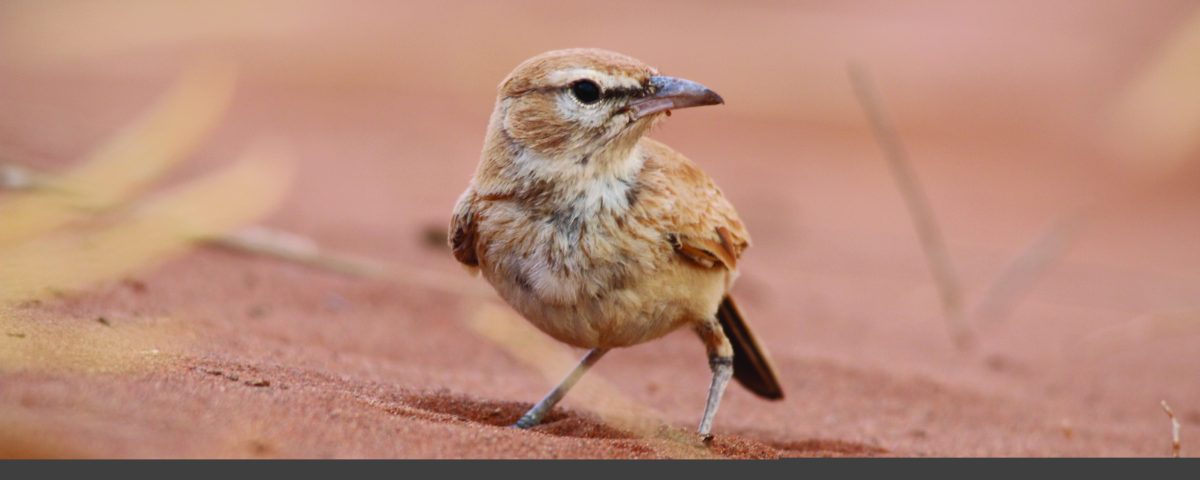
Celebrating Aawambo culture with Omagongo
September 5, 2019Once upon a time: WHEN ROANS DID ROAM
September 5, 2019To explain something that you yourself do not understand can be extremely heart-warming. It can become so warm that even cold hard facts cannot put the matter to rest. I have been trying to sort out larks, as in identify, classify and file in the correct folder, for many years. My initial thought was to wait a bit until I was able to identify and list all the easy ones, putting all the LBJs (Little Brown Jobs for all the non-birders) on a sort of waiting-list. After many years I came to the conclusion that before I want to get to grips with larks, I first had to differentiate between larks and pipits, maybe even the odd scrub robin. I have been busy with this process into the small hours of the morning for more than ten years and have come to the conclusion that to master the art of this very intricate process I need to buy some more books.
Text and Photographs Pompie Burger
I started with bird books, but later I realised an anatomy book will also come in handy. Much later I came to the realisation that sounds/music/calls/whistles/singing are indispensable, so CDs were next on my shopping list. It does not make them more attractive when Roberts, the father of birds in southern Africa, describes these birds as drab, but remember, “We are ugly, but we have got the music” (Leonard Cohen). Without going into the gory details as far as books are concerned, I have gone through a stack of bird books (LBJs made simple, Look-alike birds, Chamberlain’s LBJs, “LBJs for the stupid”, etc), bought, begged, stole and borrowed (to be returned as soon as I am able to sort out the lark/pipit saga). To “complify” the problem, the habitat where you find the birds will also affect the identification, for which you also will need a few more books (atlases).
I started off with the listening (CD) part. Apparently this is the most important part of lark identification. Listening to music is a very relaxing and satisfying activity because you can study the calls/music much better, lying down, eyes closed.
LEFT
Starks Lark near Spitzkoppe. Typical of this species with its raised fringe.
RIGHT TOP TO BOTTOM
Rufous-naped Lark. A Zambezi Region specimen.
Monotonous Lark listening to the music.
Not trying to sound too much like Herman Charles Bosman, every time I start the process I fall asleep. At the same time, the series of dreams that follow is so exciting that I end up listening to the same call over and over, pretty much as in the Jan Spies story of Psalm 119.
Unfortunately, at some point, I had to start with the larks, but the less said about them, the better, so try to enjoy the scenery and ignore the facts. Step one is trying to separate larks from pipits. To do this, there are a few critical “look for” points. To make everything even more complicated (Thesaurus does not know the word complify, how stupid) is the fact that pipits and larks are the largest groups of birds, so LBJ ID is challenging. They are not closely related to each other. One third (45) of the world’s population occur in southern Africa, 23/31 lark species and 6/14 pipit species. The good news is that Namibia has a lot of these, so no better place to start this very exciting search for knowledge to identify the world of drabs.
Once you have differentiated between larks and pipits using the easy step-by-step instructions on the opposite page, you are well on your way to starting with the next step – that is, if by now you have any idea of what is going on. If not, go back to start and do not collect N$ 200, and please just concentrate and listen because the music is all around you.
Once you have done the ID and are sure you are dealing with a lark, it should be easy to sort it into one of the following groups and, voila, you’ve done it:
Unique Larks: Dusky, Spike-heeled, Red-capped, Large bill
Karoo/Desert Larks: Dune, Barlow’s, Karoo
Small Desert Larks: Sclater’s, Stark’s, Gray’s
Savanna Larks: Sabota, Fawn-coloured
Mirafra Larks: Melodious, Monotonous
Clapper Larks: Flappet, Eastern Clapper, Cape Clapper
Sparrow-Larks: Grey-backed, Chestnut-back, Black-ear
Long-billed Lark: Short claw, Eastern, Agulhas, Benguela, Karoo
The last wonderful good news is that you will also find the most geographical variation in larks. This means that you will have to deal with that terrible word “subspecies”. Imagine, there are indeed 11 subspecies of Spike-heeled Larks. Not to sound too negative, I really still struggle to identify a Spike-heeled Lark, end of story.
Eventually, I succumb to the age-old trick of asking a proper birder to help me, although I really am getting better as time goes by. Unfortunately, as the saying goes, Wisdom comes at a time when it is no longer needed.
STEPS TO IDENTIFYING A LARK:
- Habitat: If in a bird-cage – it is probably a budgie
- Size: If very small – it is a cisticola, go back to larks
- Bill: Thick bill – it is a Thick-billed Weaver, back to larks
- Legs: Beautiful legs – Miss Namibia, stay there
- Tail: Short tail – Bateleur, long tail – Blue Crane, you are lost
- Wings: Big – angel, and saved
- Call: Beautiful – Springsteen, relax.
TOP LEFT TO BOTTOM RIGHT
Grey-backed Sparrow-lark, almost a sitter.
Benguela Long-billed Lark near Brandberg.
Spike-heeled Lark. Common in Etosha, just look for the spike.
Fawn-coloured Lark in the Kalahari south of Mariental.
Dusky Lark in Etosha. One of the relatively easy ones to ID.
This article was first published in the Spring 2019 issue of Travel News Namibia.


